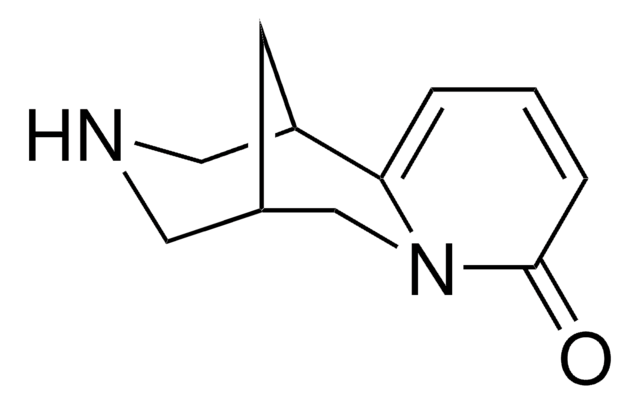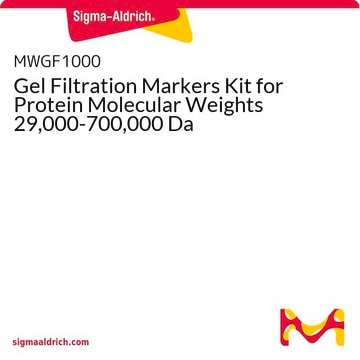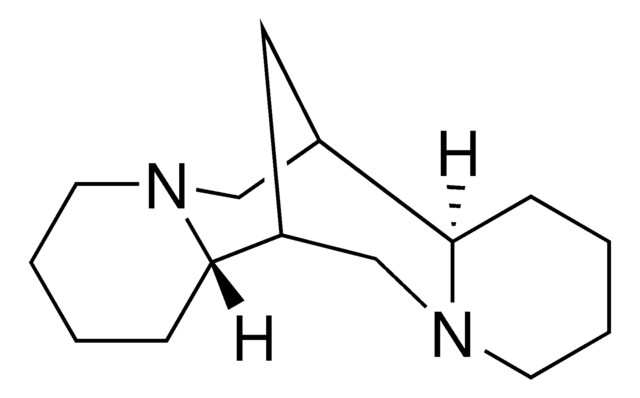C2899
Cytisine
≥99%, powder
Sinonimo/i:
(−)-Cytisine, (1R,5S)-1,2,3,4,5,6-Hexahydro-1,5-methano-8H-pyrido[1,2a][1,5]diazocin-8-one, (1S,9S)-3,11-Diazatricyclo[7.3.1.03,8]trideca-5,7-dien-4-one, Baptitoxin, Laburnin, Sophorine, Ulexine
Scegli un formato
Scegli un formato
About This Item
Prodotti consigliati
Saggio
≥99%
Stato
powder
Colore
light yellow
P. ebollizione
218 °C/2 mmHg (lit.)
Punto di fusione
154-156 °C (lit.)
Stringa SMILE
O=C1C=CC=C2C3CNCC(C3)CN12
InChI
1S/C11H14N2O/c14-11-3-1-2-10-9-4-8(5-12-6-9)7-13(10)11/h1-3,8-9,12H,4-7H2/t8-,9+/m0/s1
ANJTVLIZGCUXLD-DTWKUNHWSA-N
Informazioni sul gene
rat ... Chrna2(170945) , Chrna3(25101) , Chrna4(25590)
Cerchi prodotti simili? Visita Guida al confronto tra prodotti
Descrizione generale
Azioni biochim/fisiol
Caratteristiche e vantaggi
Avvertenze
Danger
Indicazioni di pericolo
Consigli di prudenza
Classi di pericolo
Acute Tox. 3 Dermal - Acute Tox. 3 Inhalation - Acute Tox. 3 Oral
Codice della classe di stoccaggio
6.1C - Combustible acute toxic Cat.3 / toxic compounds or compounds which causing chronic effects
Classe di pericolosità dell'acqua (WGK)
WGK 3
Punto d’infiammabilità (°F)
Not applicable
Punto d’infiammabilità (°C)
Not applicable
Dispositivi di protezione individuale
Eyeshields, Faceshields, Gloves, type P2 (EN 143) respirator cartridges
Scegli una delle versioni più recenti:
Possiedi già questo prodotto?
I documenti relativi ai prodotti acquistati recentemente sono disponibili nell’Archivio dei documenti.
Active Filters
Il team dei nostri ricercatori vanta grande esperienza in tutte le aree della ricerca quali Life Science, scienza dei materiali, sintesi chimica, cromatografia, discipline analitiche, ecc..
Contatta l'Assistenza Tecnica.






